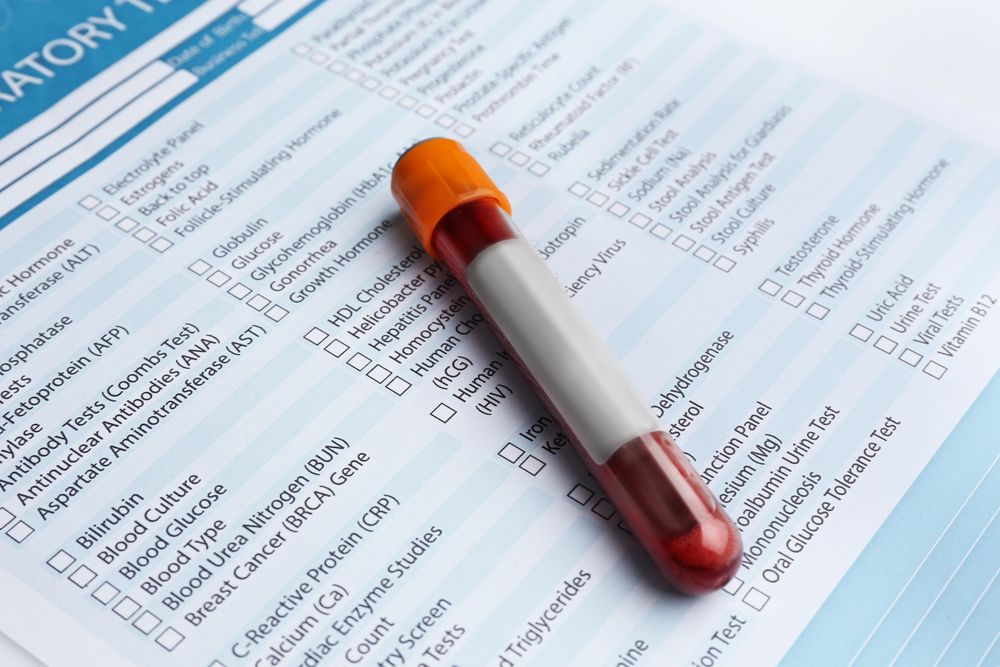Diabetes exists in various types and sizes. In this condition, the body either does not respond well to insulin or does not produce it at all. This leads to an accumulation of sugar (glucose) in the blood, causing detrimental effects. Too much glucose in diabetes can affect the kidneys, nerves, eyes, and many more organs. The primary diagnosis of diabetes focuses on determining the glucose level in the blood. Previously, glucose was also considered in urine, but that is no longer the case. We also look at HbA1C, a molecule in the blood to which glucose can attach. When HbA1C is surrounded by glucose molecules, it cannot function properly, leading to, among other things, vascular damage. HbA1C is, in turn, bound to blood cells, which perish every (average) 120 days. This means that a lab determination of HbA1c is a good prediction of your glucose levels over the past 2 months. We also measure albumin in the urine. Albumin is a large protein that does not easily pass through the kidney. When albumin is measured in the urine, we know something must be wrong with the kidneys. In diabetes, we often see albumin leaking into the urine through the kidneys, as the kidneys are damaged.






Diabetes
Markers:
Glucose,
HbA1c,
Albumine (urine)
For this blood determination, you need to be fasting. It is best to have blood drawn early in the morning.
Glucose determination in the blood is used to diagnose diabetes. By measuring glucose, you can also monitor if your diabetes is under control if you are already a diabetes patient. The HbA1c determination in the blood test is comparable to sugar measurement, but it provides information about the past two months. The albumin determination in the urine indicates whether the kidneys are leaking or not.
The accuracy of the test for Diabetes is conducted through ISO-certified laboratories. The accuracy of a test method is expressed in terms of specificity and sensitivity. However, the most important aspect is that the results are interpreted and accepted among general practitioners and hospitals. This is the case with our venous samples. Mutual acceptance may not always be present due to potentially reduced reliability with a capillary sample.
Most tests generally take 24-48 hours. Tests that go through an LC-MS method generally take longer, think about an average of 3-7 working days. Additionally, it also depends on the location. Some locations do the analysis themselves and others outsource it to another lab.
Interpreting the results of Diabetes is not always easy and should be seen in the broader picture, along with anamnesis and physical examination. In the doctor's advice section, the query in which you can already outline your complaints is taken into account, otherwise, the results are interpreted in conjunction with the other results. If necessary, the doctor can call to ask about physical abnormalities. You don't have to interpret the results yourself because there is always advice and explanation from the doctor.
If the results of the test for Diabetes are clinically significantly abnormal, the doctor will contact you by phone. If you are not reachable, you will receive an email. This includes advice and an explanation of the abnormal results and what you can do about them. If you need a prescription or referral, we can help with that.
The costs of Diabetes can be found on the product page. Depending on your insurance and additional packages, you may be reimbursed for these costs for Diabetes. For example, tests for IVF treatment are often reimbursed. After your order, you will receive an invoice that you can submit to your insurance.
The ordering process is easy. You can add a Diabetes test or the tests you want to your shopping cart. In step two, you fill in your details and pay. Then you will receive an email confirmation and you can go to a collection location. After you have been there, you will receive the results of the Diabetes test in your Portal.
We are certified-ready according to the NEN 7510 and 7512 standards for secure data transfer in healthcare. The Portal is secured with two-factor authentication. Your data is also encrypted. We do not send the results of Diabetes to third parties without permission, not even to your general practitioner without your consent.
The blood test for Diabetes must take place at one of the collection locations we provide. At certain locations, it is possible for a phlebotomist to come to you. You can indicate this during checkout. An appointment will then be made as soon as possible to come to your home.
Yes, fasting is required for a Diabetes test
You can easily make an appointment for Diabetes blood test after your order in your Portal. You can visit almost daily in all major cities in the Netherlands. In smaller cities, you can visit on certain days. At certain locations, it is also possible to visit on weekends.
An interpretation by a doctor or an explanation is included in the Diabetes test. The explanation takes into account the query that you can specify in your Portal after ordering.
For blood tests, we always use venous sampling. This is the gold standard for blood collection. Over-the-counter tests, such as a finger prick test, use the capillary route for blood collection. These do not always give the same results and the accuracy depends on how, where, and with which technique the collection is done. The advantage, of course, is that the test is easier and less painful to take.
You can always pay with iDeal and credit card (VISA, Mastercard, and Amex). This also includes Apple Pay. The phlebotomists at the collection location cannot accept cash payments.
The results of Labplusarts can be shared with your general practitioner at your request. However, you can also easily arrange this yourself by downloading the result in PDF format. Because we use comparable test methods as the general practitioner, the results are interchangeable and comparable so that comparisons can be made well.
EUR
79,00
Nuchter zijn
?
Validatie door artsen
Uitslag binnen: 24 - uur
?
Spoed mogelijk
?
Need help?
Bel naar 085-0043917 voor advies of chat via Whatsapp
Related products
Lab test without a referral at 350+ locations
Eenvoudig bloedprikken waar en wanneer het jou uitkomt.